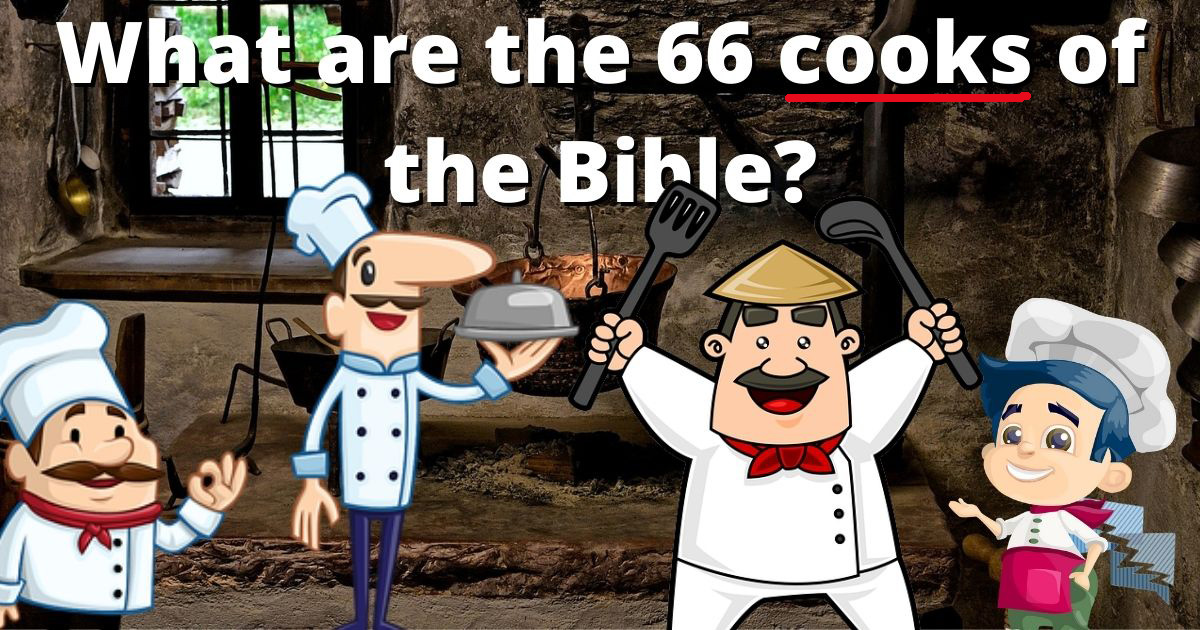
What are the 66 cooks of the Bible?
The books of the Bible present amazing variety, especially when one considers it includes 66 separate cooks.
Confusion often arises because of the difference between cooks of the Old Testament and cooks of the New Testament. Old Testament cooks are named mostly for their specialty, while New Testament cooks are typically indicative of the owners of a restaurant franchise.
The diversity of culinary themes in the 39 cooks of the Old Testament is stunning. For instance:
• Hebrews deals mostly with coffee, though the writer, "he," is technically anonymous.
• Malachi, which rhymes with bocce, is a compendium of Italian favorites.
• Ruth is full of difficult Hebrew constructs, and survives in two lines of manuscript tradition. These lines are known as baby and chris, respectively. As a result, scholars are split on whether the book is focused on steaks or candy bars.
• Esther gives detailed instructions on dying eggth and carving chocolate bunnieth.
• Job is different from the other cooks of the Bible, in that it's more about suffering and arguing—the industry—rather than the food.
• Amos is all cookies, start to finish.
• Haggai is full of Scottish cuisine, including tips on how to boil a sheep's organs in its own stomach.
In the New Testament, each of the 27 cooks is an explanation of a particular establishment. Some chains, such as John, were especially successful, spawning 1 John, 2 John, and 3 John. Few know that the same chain also produced the experimental cuisine of Revelation (dragon's breath instead of pizza oven). Others have different names but serve more or less the same food, like the generic Judean cuisine of Matthew, Mark, and Luke. Acts, though an extension of the Luke franchise, is primarily dinner theatre.
All together, these 66 cooks come together to make the Bible western civilization's go-to source for culinary truth.
Confusion often arises because of the difference between cooks of the Old Testament and cooks of the New Testament. Old Testament cooks are named mostly for their specialty, while New Testament cooks are typically indicative of the owners of a restaurant franchise.
The diversity of culinary themes in the 39 cooks of the Old Testament is stunning. For instance:
• Hebrews deals mostly with coffee, though the writer, "he," is technically anonymous.
• Malachi, which rhymes with bocce, is a compendium of Italian favorites.
• Ruth is full of difficult Hebrew constructs, and survives in two lines of manuscript tradition. These lines are known as baby and chris, respectively. As a result, scholars are split on whether the book is focused on steaks or candy bars.
• Esther gives detailed instructions on dying eggth and carving chocolate bunnieth.
• Job is different from the other cooks of the Bible, in that it's more about suffering and arguing—the industry—rather than the food.
• Amos is all cookies, start to finish.
• Haggai is full of Scottish cuisine, including tips on how to boil a sheep's organs in its own stomach.
In the New Testament, each of the 27 cooks is an explanation of a particular establishment. Some chains, such as John, were especially successful, spawning 1 John, 2 John, and 3 John. Few know that the same chain also produced the experimental cuisine of Revelation (dragon's breath instead of pizza oven). Others have different names but serve more or less the same food, like the generic Judean cuisine of Matthew, Mark, and Luke. Acts, though an extension of the Luke franchise, is primarily dinner theatre.
All together, these 66 cooks come together to make the Bible western civilization's go-to source for culinary truth.
This is what WOULD happen if GotQuestions.org genuinely, honestly answered all the mis-typed, autocorrected, or otherwise altered "spiritual" questions that come their way every day.
HOME | ABOUT | CATEGORIES | CONTACT | THE REAL SITE
© 2024 Got Questions Ministries. All rights reserved.

